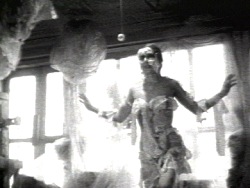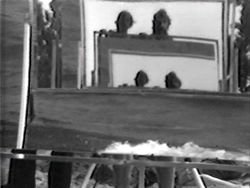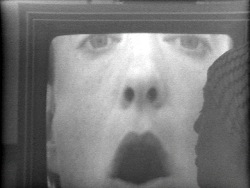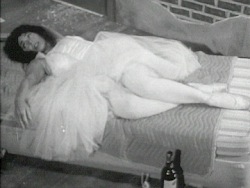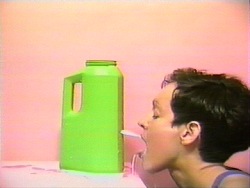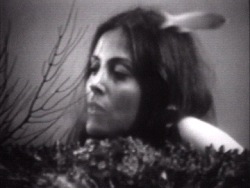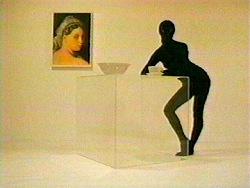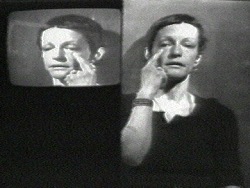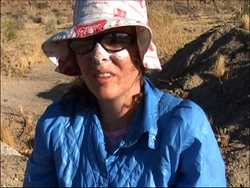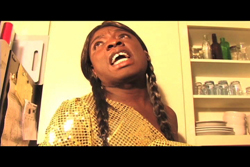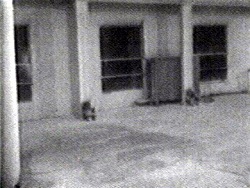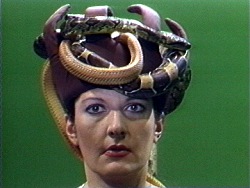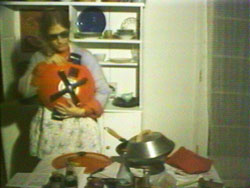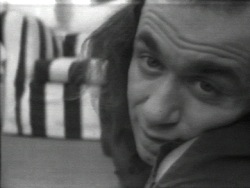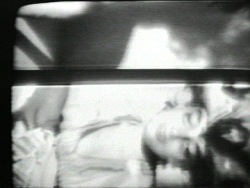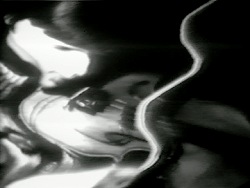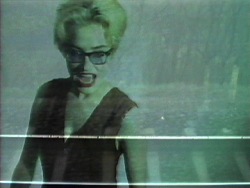
45 YEARS OF PERFORMANCE VIDEO FROM EAI
45 YEARS OF PERFORMANCE VIDEO FROM EAI
22-25 Jackson Ave at the intersection of 46th Ave
Long Island City, NY 11101
Thursday - Monday, noon - 6 pm
45 YEARS OF PERFORMANCE VIDEO FROM EAI
22-25 Jackson Ave at the intersection of 46th Ave
Long Island City, NY 11101
Thursday - Monday, noon - 6 pm
45 YEARS OF PERFORMANCE VIDEO FROM EAI
22-25 Jackson Ave at the intersection of 46th Ave
Long Island City, NY 11101
Thursday - Monday, noon - 6 pm
Works
Trecartin describes this work as a "narrative video short that takes place inside and outside of an e-mail." Trecartin, wearing his signature make-up, jumps back and forth between male and female roles. Totally self-absorbed and equipped with vestigial attention spans, the stylized characters are constantly on the phone or online. Their e-mail exchanges and Internet searches are channeled into bright animations that intersect with "real world" locations; the story moves from person to person like a browser surfing through Web pages.
In a powerful collusion of traditional and pop cultural mythologies, Labat confronts his Cuban heritage and identity, and critiques the representation of this culture by the mass media. Donning theatrical face-paint and a wig, Labat transforms himself into an icon of Babalu, the Afro-Cuban folk...
This piece documents one of Smith's earliest performances of his "Baby Ikki" character, in which he performs in public as an oversized infant in diaper, hat and sunglasses. Baby Ikki was conceived as a mute, ambiguous character fixed neither by age nor gender — an archetype with an unclear...
In this narrative performance for video, Burden tells the story of his relationship with a truck named "Big Job." To relate his autobiographical monologue, he sits deadpan before the camera with moving images of the truck behind him. Writes Burden, "During a six-month period, while the artist...
This is a newly restored version of a visceral "movement-event" from 1967, in which Schneemann paints her body with wallpaper paste and molasses, and then runs, leaps, falls into and rolls through shreds of white printer's paper, creating a physicalized corporal collage.
Button Happening is Nam June Paik's earliest extant videotape, and possibly his first tape ever. Recorded in 1965 on the day he acquired his first Sony Portapak camera, this previously unknown work has recently been rediscovered and restored. Recorded on computer tape, this technically fragile...
The artist reconnects two sections of a broken coffee table.
In this early conceptual experiment by General Idea, the artists manipulate reflecting surfaces to generate optical "feedback." Two mirrors are positioned to face one another over the edge of a lake. The mirrors are gradually tilted as the camera zooms in and out, revealing fragments of faces and rippling water. The multiplication of reflections produces a kaleidoscopic, disorienting effect.
Newly re-mastered through EAI's Videotape Preservation Program, this tape is a classic early video performance. In this seminal exploration of the phenomenology of video as a mirror and as "reality," Jonas, face-to-face with her own recorded image, performs a duet with herself.
Writes McCarthy: "A father and son without a mother, a house on the hill.
Fatty Daddy Tyranny
Break his back
Wack wack a doo
Daddy, a roly-poly alpiner
Kissin' each other behind the door
So smack and blackened the eye
Of that little punky winker
Slap, slap a doo
Down the stairs...
The archivist attempts to put together the "lost years" of Eleanor Antinova, the once celebrated black ballerina of Diaghlev's Ballet Russe, when she returned to her native America to eke out a meager living in vaudeville and early movies. Her career in America is documented through narrative and dance films, which she made during the Great Depression. The documentary-fiction includes several comedy shorts, spicy farces, a semi-blue movie exploiting her ballerina role, along with vaudeville dance numbers and artistic interpretations.
This complex and enigmatic work, which is performed by Jonas and Lois Lane, explores female gestures, poses, the body and narcissism. Mirroring each other with synchronized movements as they perform as alter-egos, Jonas and Lane reference archetypal female gestures and poses from popular and...
With Head, Donegan ushered in a new era of brash, low-tech performance video. Here she confronts sex, fantasy, and voyeurism in an autoerotic work-out performed to pop music. The tape records a direct performance action: Donegan unplugs the spout of a plastic container; a stream of milk spurts...
Hello Boys documents a performance at the Gallery Gerald Piltzer in Paris. Seen through the glass of a large fish tank, Wilke, nude, performs a repertoire of studied erotic gestures to the accompaniment of rock music. Entrapped in her fish bowl, on display behind glass, she is both subject and...
Hyperbulie is a performance work that pushes the body to its physical extremes. The performance elements are first established: a framework of wires are connected to electric batteries. VALIE EXPORT appears and makes contact with live electricity as she negotiates the wire construction.
Writes Pearlstein: "A white cat, the Playboy party jokes girl, an artist/florist, and the Energizer bunny are among the disparate characters who inhabit Interiors, a loop of six scenes based on a series of drawings. Like animated pictures, each depicts an interior landscape which transforms...
In this early work, Jonas translates her performance strategies to video, applying the inherent properties of the medium to her investigations of the self and the body. Jonas performs in a direct, one-on-one confrontation with the viewer, using the immediacy and intimacy of video as conceptual...
Based on a live performance by Stanya Kahn, Let the Good Times Roll shuffles time and location as two loners meet in the desert on their way to a rock show. Stories of seasonal depression and finding unexpected exuberance emerge in suspended, Waiting for Godot-like circumstances.
Media Burn
Ant Farm: Chip Lord, Doug Michels, Curtis Schrier, Uncle Buddie
1975, 23:02 min, color, sound
Media Burn integrates performance, spectacle and media critique, as Ant Farm stages an explosive collision of two of America's most potent cultural symbols: the automobile and television. On July 4, 1975, at San Francisco's Cow Palace, Ant Farm presented what they termed the "ultimate media event." In this alternative Bicentennial celebration, a "Phantom Dream Car"—a reconstructed 1959 El Dorado Cadillac convertible—was driven through a wall of burning TV sets.
Melody Set Me Free is an alternately hilarious and heartbreaking narrative about contestants in an American Idol-style talent show competition and their quest for fame and stardom. Writes Linzy, "Vying to win a recording contest, they must take a Whitney Houston song and make it their own." The narrative was written, directed, and edited by Linzy, who also performs and overdubs all of the voices of the multiple characters.
Now takes on video's claims to immediacy and authenticity, as Benglis juxtaposes live performance with her own prerecorded image. The soundtrack features phrases such as "now!" and "start recording," commands that usually ground us in the present, but here serve to deepen the confusion between live signals and mediation. Repeated takes and acidic color processing heighten this challenge to video's power of "liveness."
This performance, at London's Lisson Gallery, documents Graham's project of psychologically restructuring space and time. Graham writes, "Two people who know each other are in the same space. While one predicts continuously the other person's behavior, the other person recounts (by memory) the...
In his performances, Palestine often uses teddy bears and toy pandas as what he terms "symbols of identification, like another reality of myself." In Running Outburst, these symbolic objects, placed at specific points in his loft, serve as surrogates for Palestine, who remains invisible behind...
Here Moulton's alter ego Cynthia again gains access to a parallel universe via the transformative powers of New Age body treatments and domestic objects. After applying a facial beauty mask, she moves through an environment energized with Southwestern motifs and rituals, from sculpted heads and Georgia O'Keefe-like forms to sand painting and hot stone massage. Ultimately Cynthia is transported to a fantastical world and emerges transformed.
A fixed camera turned on its side records Nauman repeating for nearly an hour a laborious sequence of body movements inspired by passages in works by Samuel Beckett that describe similarly repetitive and meaningless activities. Hands clasped behind his back, he kicks one leg up at a right angle...
This hilarious compilation of Wegman's earliest works features a series of short, single-take anecdotes that introduce his idiosyncratic approach to video and humor. These technically raw-edged vignettes use understated means to create conceptual sight gags and absurdist one-liners. Wegman's deadpan spoken delivery of his monologues, and his ingenious use of everyday objects, subvert the viewer's expectations and transform the ordinary into the surreal.
In this autobiographical collaboration with Atlas, Marina Abramovic delivers a monologue that traces a concise personal chronology. This brief narrative history, which references her past in the former Yugoslavia, her performance work, and her collaboration with and separation from Ulay, is intercut with images of Abramovic engaged in symbolic gestures and ritual acts. Closing her litany with the phrase "time past, time present," Abramovic invokes the personal and the mythological in a poignant affirmation of self.
In an astute deconstruction of the political ideology that pervades the everyday, The East is Red, The West is Bending is a tongue-in-cheek presentation of a booklet that accompanies a newly marketed consumer appliance, a West Bend electric wok. In this performance-based work, Rosler reads the...
"Birth. A cup of coffee, a newspaper. Death. Birth. A cup of coffee, a newspaper. Death. Birth. A cup of coffee...." — Stuart Sherman
In Theme Song, Acconci uses video as close-up to establish a perversely intimate relation with the viewer, creating a personal space in which to talk directly to (and manipulate) the spectator. The film, with its ironic mixture of openness and manipulation, is one of Acconci's most effective works.
Again, Myers negotiates her relationship to the frame of the camera as it gradually realigns itself — this time in a clock-wise movement that turns the room sideways. Myers adjusts her position, bracing herself with increasing difficulty against the wall, in an attempt to remain upright even as the camera does not.
Bag replicates the experience of channel-surfing, portraying a gamut of TV personalities and advertising stereotypes against a backdrop of intermittent static. Bag's types are cathode creatures of the '90s, perfectly tuned to that decade's aesthetic of overwrought edginess and carefully cultivated grunge.
Vertical Roll is a seminal work. In a startling collusion of form and content, Jonas constructs a theater of female identity by deconstructing representations of the female body and the technology of video. Using an interrupted electronic signal — or "vertical roll" — as a dynamic formal device,...
Video III combines glimpses of a frenzied, cultish congregation, sketches reminiscent of a children's TV program, and a rich, noisy electronic soundtrack.
Steina terms this procedural work "a demo tape on how to play video on the violin." Her background as a violinist and her evolution from musician to visual artist is referenced through an analogy of video camera to musical instrument. Steina is first seen in footage from the early 1970s, playing...
In Walking Forward-Running Past, Baldessari ingeniously employs photography and video to examine and ultimately deconstruct film. In this conceptual exercise, he tapes up photographic film stills of himself walking toward the camera—coming closer with each successive image—and then photos of...
At once playful and disconcerting, You Called Me Jacky features Rist lip-synching to the title song, her image superimposed with fleeting images seen from the window of a moving train. Miming with exaggerated gestures or vamping in convincing imitation of Madonna, even as she flubs her lines, Rist negotiates the music-video format's claims to slickness and production values as well as its desire for raw authenticity.




